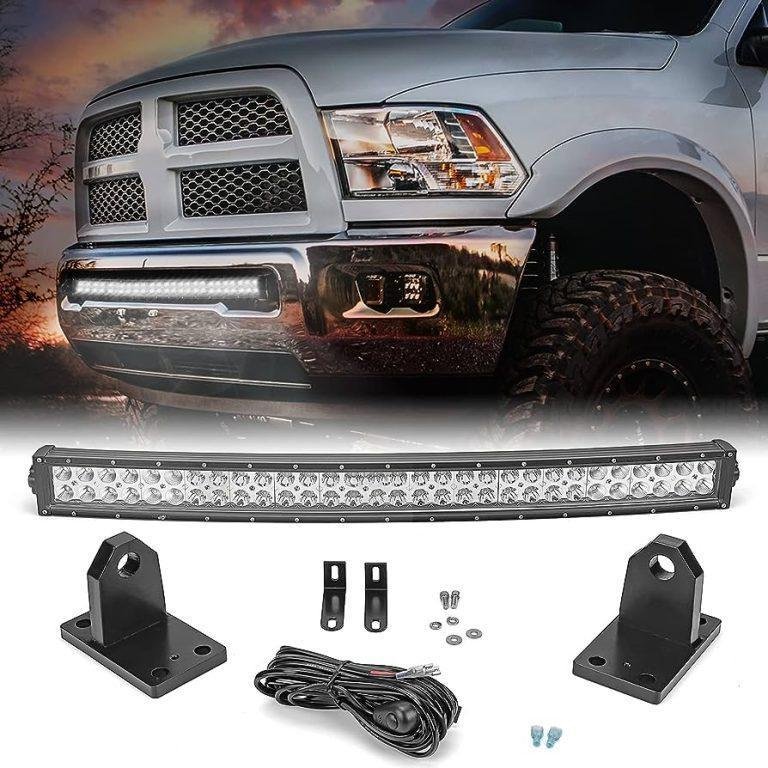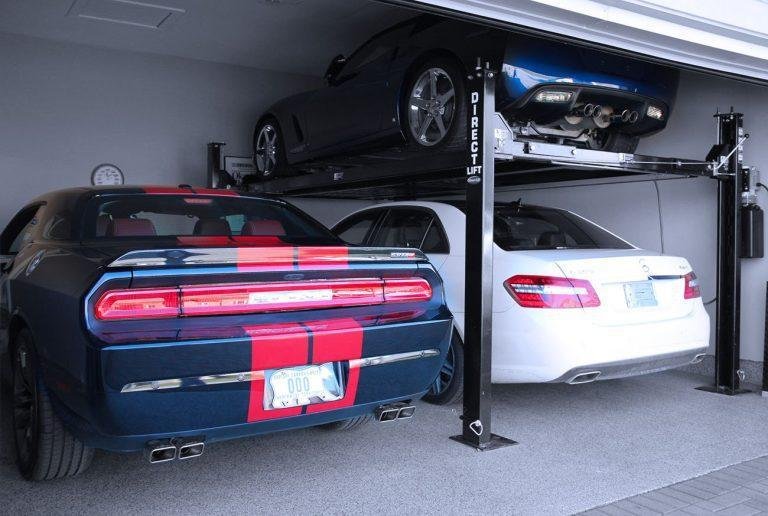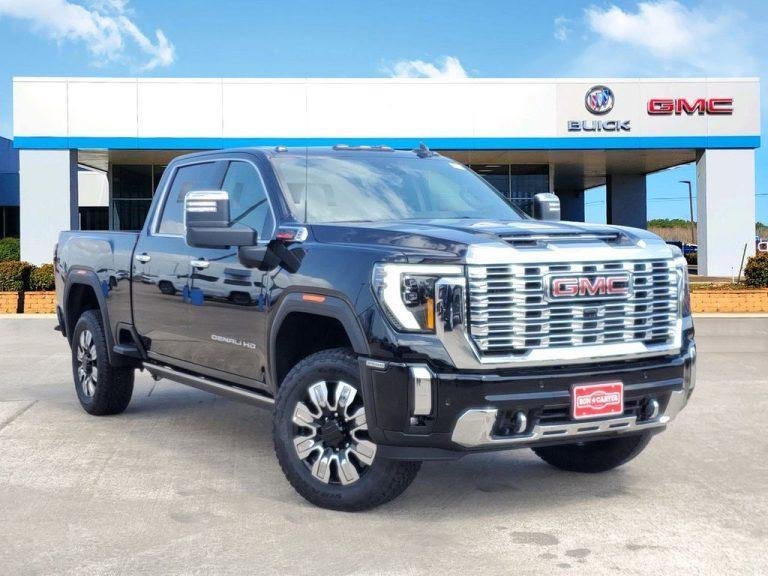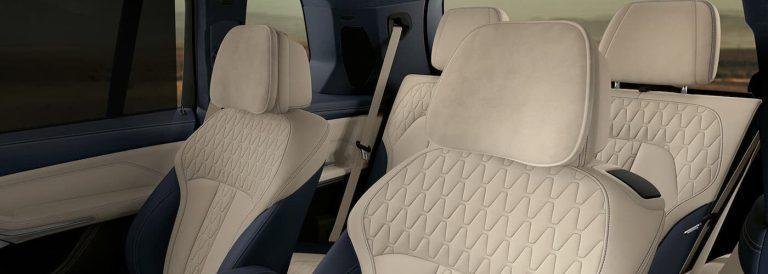A 2 post car lift uses two vertical posts to raise and support a vehicle. These posts are equipped with arms or pads that lift the vehicle from its frame.
The lift is powered by a hydraulic pump which applies pressure to raise or lower the vehicle. This type of lift is commonly used in auto repair shops and garages for vehicle maintenance and repairs. It provides a secure and stable platform for working underneath the car, as well as easy access to the vehicle’s undercarriage.
The design of the 2 post car lift allows for efficient use of space and easy maneuverability, making it a popular choice for many automotive professionals.
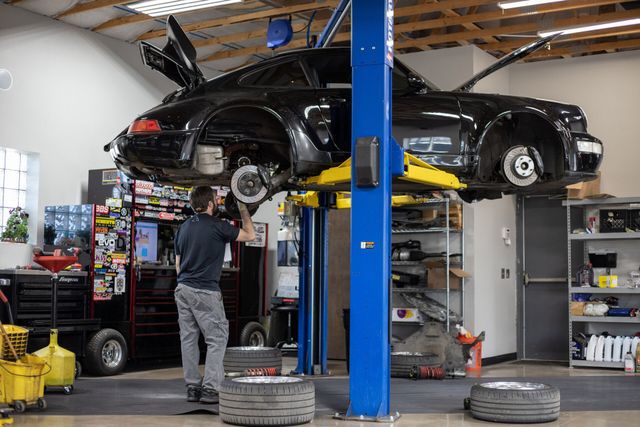
Credit: www.blackcanyonperformance.com
The Basics Of A 2 Post Car Lift
A 2 post car lift functions by utilizing two posts that raise and lower vehicles for maintenance or repair. These lifts feature sturdy construction and adjustable arms, making them suitable for various vehicle models and sizes.
Understanding The Components Of A 2 Post Car Lift
When it comes to efficiently working on vehicles in a workshop or garage, a 2 post car lift proves to be an invaluable tool. This lift consists of several crucial components that enable it to lift and support vehicles securely.
Let’s take a closer look at these components:
- Columns: The primary structure of a 2 post car lift consists of two columns, which are upright metal supports. These columns are securely anchored to the ground and typically positioned on either side of the vehicle, providing balance and stability during lifting.
- Arms: Attached to the columns are the lifting arms, also known as swing arms or boom arms. These arms extend outward and downward to make contact with the vehicle’s lifting points, such as the frame or axle. The arms can be adjusted horizontally and vertically to accommodate different vehicle sizes.
- Lifting pads: At the end of each arm, you will find the lifting pads. These pads are designed to evenly distribute the weight of the vehicle and provide a secure contact point without damaging the vehicle’s undercarriage.
- Crossbeam: Connecting the two columns at the top is the crossbeam, also known as the overhead beam. This beam adds structural integrity to the lift and ensures stability during the lifting process.
- Hydraulic power unit: The hydraulic power unit is the heart of a 2 post car lift. It consists of an electric motor, a hydraulic pump, and a reservoir of hydraulic fluid. When activated, the pump pressurizes the fluid, which then flows through hydraulic lines to the cylinders for lifting the vehicle.
Exploring The Lifting Mechanism
The lifting mechanism of a 2 post car lift operates on a simple but effective principle. Here’s a breakdown of how it works:
- The lift begins in the lowered position, with the vehicle positioned between the columns.
- When the operator activates the lift, the hydraulic pump starts pressurizing the hydraulic fluid.
- The pressurized fluid is directed to the hydraulic cylinders, which are attached to the columns. These cylinders consist of a piston and a cylinder housing.
- As the fluid enters the cylinders, it pushes the piston upward. The piston is connected to the arms, which then start to rise, lifting the vehicle.
- The hydraulic system maintains constant pressure to keep the lift in the desired position. This allows mechanics to work safely underneath the vehicle.
- To lower the lift, the operator releases the pressure on the hydraulic fluid, allowing it to flow back to the reservoir. This causes the piston to descend, gradually lowering the arms and the vehicle back to the ground.
Examining The Role Of Hydraulic Cylinders
Hydraulic cylinders play a crucial role in the operation of a 2 post car lift. Let’s take a closer look at their functionality:
- Piston and cylinder housing: The hydraulic cylinder consists of a piston and a cylinder housing. The piston is connected to the lifting arms and moves up and down within the cylinder housing.
- Seals: The cylinder housing contains seals that prevent hydraulic fluid from leaking out. These seals are essential for maintaining the pressure required to lift the vehicle.
- Hydraulic lines: The hydraulic lines connect the hydraulic cylinders to the hydraulic power unit. They transport the pressurized fluid to the cylinders, allowing for the lifting and lowering of the arms.
- Safety features: Hydraulic cylinders often incorporate safety features like velocity fuses or check valves to prevent sudden arm descent in the event of hydraulic failure. These features ensure the lift remains stable even in unexpected situations.
A 2 post car lift operates by utilizing the power of hydraulic cylinders, lifting arms, and structural components to raise and support vehicles for maintenance and repair. Understanding the basics of this lifting equipment is essential for automotive professionals and diy enthusiasts alike.
Safety Measures For Using A 2 Post Car Lift
2 post car lifts are essential for vehicle maintenance, but safety measures must be implemented. These lifts work by lifting the car with two posts, so it’s important to ensure proper installation, use safety locks, and follow weight capacity guidelines to prevent accidents and injuries.
Installing a 2 post car lift in your garage can greatly enhance your automotive maintenance capabilities. However, it’s essential to prioritize safety when utilizing this equipment. By following proper installation and maintenance procedures, understanding weight limits and load distribution, and ensuring secure positioning and stability, you can minimize risks and work on your vehicles confidently.
Importance Of Proper Installation And Maintenance:
- Adequate installation: Ensure that the car lift is properly installed by a professional to guarantee its stability and functionality.
- Regular maintenance: Regularly inspect the lift for any signs of wear and tear, loose components, or fluid leaks. Schedule professional maintenance to keep it in optimal condition.
- Manufacturer guidelines: Follow the manufacturer’s instructions for installation and maintenance to prevent accidents and maximize the lifespan of the lift.
Understanding Weight Limits And Load Distribution:
- Weight capacity: Know the weight capacity of your 2 post car lift and never exceed it. Loading a vehicle that exceeds the lift’s capacity can lead to structural failure and dangerous situations.
- Load distribution: Distribute the weight of the vehicle evenly on both lifting arms to maintain balance and stability. Ensure that the load is centered and does not exceed the specified limits.
Ensuring Secure Positioning And Stability:
- Proper positioning: Position your vehicle properly on the lift pads, ensuring that it is aligned and securely seated on the lifting arms.
- Base stability: Before lifting the vehicle, make sure the lift is securely anchored to the floor or surface. The stability of the base is crucial to prevent the lift from tipping or collapsing.
- Safety locks: Engage the safety locks on both lifting arms once the vehicle is raised to the desired height. These locks provide an added layer of security to prevent any accidental lowering or instability.
Remember, safety should never be compromised when using a 2 post car lift. By following these safety measures, you can confidently work on your vehicles and maintain a secure and efficient workspace.
Steps To Safely Operate A 2 Post Car Lift
Operating a 2 post car lift safely involves following specific steps. By placing the vehicle in the designated lifting areas, engaging the safety locks, and utilizing the hydraulic system, the lift will raise and secure the vehicle efficiently. Remember to release the locks and lower the lift carefully when the job is completed.
Have you ever wondered how a 2 post car lift works? If you’re a car enthusiast or a professional mechanic, understanding the steps to safely operate this equipment is crucial. In this section, we will explore the process of using a 2 post car lift, ensuring that you follow the necessary precautions to ensure a smooth and accident-free experience.
Preparing The Vehicle And Ensuring Proper Placement
Before operating a 2 post car lift, it’s essential to prepare the vehicle and ensure that it is placed correctly. Here are the steps you need to follow:
- Position the car: Drive the vehicle onto the lift’s designated lifting points, ensuring that the wheels are centered between the lift columns.
- Engage the lift locks: Activate the lift locks to secure the vehicle in place before lifting.
- Check for obstructions: Make sure there are no obstacles, such as loose objects or fluids, that may hinder the lifting process.
Engaging The Lifting Mechanism
Once the vehicle is properly positioned, it’s time to engage the lifting mechanism and raise the car off the ground. Here’s what you need to do:
- Activate the lift controls: Use the control panel to engage the hydraulic system and raise the lift arms.
- Monitor the lifting process: Keep a close eye on the lifting arms and the vehicle as it raises to ensure smooth and even lifting.
- Check for stability: Once the car is at the desired height, verify that it is stable and secure before proceeding with any work.
Adjusting The Lift Height And Utilizing Safety Features
Depending on the job at hand, you may need to adjust the lift height or utilize additional safety features. Follow these steps to ensure a safe working environment:
- Adjust the lift height: If necessary, use the controls to lower or raise the vehicle to the required working height.
- Lock the lift at the desired height: Engage the locking mechanism to secure the lift arms and prevent any accidental lowering.
- Utilize safety features: Some 2 post car lifts come with safety features such as arm restraints or automatic locking systems. Familiarize yourself with these features and use them accordingly.
Lowering The Vehicle And Disengaging The Lift
Once you have completed the necessary work, it’s time to lower the vehicle and prepare to disengage the lift. Here are the final steps:
- Gradually lower the vehicle: Use the lift controls to lower the car back to the ground gradually.
- Monitor the descent: Keep an eye on the vehicle as it lowers to ensure a controlled and safe return to the ground.
- Disengage the lift: Once the car is safely on the ground, disengage the lift locks and retract the arms.
By following these steps, you can operate a 2 post car lift safely and efficiently. Remember, it’s crucial to prioritize safety at all times and familiarize yourself with the specific instructions and safety guidelines provided by the manufacturer of the lift you are using.
Common Applications Of 2 Post Car Lifts
2 post car lifts are commonly used in automotive workshops and service centers for lifting vehicles off the ground. They work by utilizing two sturdy posts that lift the car from the chassis, providing access to the wheels and undercarriage for repairs and maintenance.
These lifts are essential for mechanics to safely and efficiently work on cars.
Benefits For Automotive Repair Shops
- Increased productivity: A 2 post car lift provides automotive repair shops with a convenient and efficient solution for lifting and accessing vehicles. This allows technicians to work comfortably and access different parts of the vehicle with ease, resulting in increased productivity.
- Space-saving design: With a compact and vertical design, 2 post car lifts occupy minimal floor space in the garage. This enables automotive repair shops to maximize their available workspace and accommodate more vehicles for repairs.
- Versatile lifting capacity: These lifts are available in various lifting capacities, making them suitable for a wide range of vehicles, from sedans to trucks. This versatility allows repair shops to cater to different customer needs without the need for multiple lifts.
- Easy vehicle positioning: The adjustable arms on a 2 post car lift make it easy to position vehicles correctly for inspection, maintenance, and repairs. This ensures that technicians can work on the vehicle efficiently and accurately, reducing the risk of any damage or errors.
- Cost-effective solution: Compared to other types of car lifts, 2 post lifts are generally more cost-effective. They require less initial investment and maintenance, making them a practical choice for automotive repair shops looking to enhance their workflow without breaking the bank.
Advantages For Diy Car Enthusiasts
- Space efficiency: For diy car enthusiasts with limited garage space, a 2 post car lift provides a compact and efficient solution. It takes up less floor space compared to other types of car lifts, leaving room for other tools and equipment.
- Accessibility: With a 2 post car lift, diy enthusiasts can raise their vehicles to a comfortable working height, allowing for easy access to the undercarriage and other components. This improves visibility and accessibility, making repairs and modifications easier to perform.
- Versatility: Diy car enthusiasts often work on a variety of vehicles, from sedans to suvs. 2 post car lifts are designed to accommodate different vehicle sizes and weights, providing the flexibility needed for various diy projects.
- Convenience: Instead of relying on jacks or jack stands, diy enthusiasts can enjoy the convenience of a 2 post car lift. The lift eliminates the need for manual lifting and provides a stable and secure platform for working, enhancing safety and convenience.
- Professional-grade equipment: Using a 2 post car lift allows diy car enthusiasts to work with equipment commonly found in professional automotive repair shops. This gives them access to the same tools and capabilities, helping them achieve better results and a more professional finish.
Usage Considerations For Commercial Garages
- Weight capacity: Commercial garages often work with heavier vehicles such as trucks and vans. It is crucial to choose a 2 post car lift with a suitable weight capacity to ensure safe and efficient operations.
- Installation requirements: Proper installation of a 2 post car lift is essential for safety and optimal performance. Commercial garages should ensure that the lift is properly anchored to the floor and installed by qualified professionals.
- Floor strength: The strength of the garage floor should be considered before installing a 2 post car lift. The floor needs to be able to withstand the weight of the lift and the vehicles being lifted to avoid any accidents or damage.
- Maintenance and servicing: Regular maintenance and servicing of the 2 post car lift are important to keep it in proper working condition. Commercial garages should establish a maintenance schedule and ensure that trained technicians perform inspections and necessary repairs.
- Safety features: Commercial garages must prioritize the safety of their employees and vehicles. It is important to choose a 2 post car lift that offers essential safety features such as automatic locks, emergency stop buttons, and height-adjustable arms.
Remember, whether you are an automotive repair shop, a diy car enthusiast, or a commercial garage, understanding the common applications of 2 post car lifts can help you make informed decisions and improve your vehicle maintenance and repair processes.
Differences Between 2 Post And 4 Post Car Lifts
A 2 post car lift operates by using two strong posts to lift the vehicle from its frame, providing access to the underside for repairs or maintenance. This type of lift is ideal for garages with limited space as it leaves the vehicle’s wheels free, allowing for easier movement.
If you’re a car enthusiast or own an auto repair shop, you’ve probably come across different types of car lifts. Two of the most popular options are the 2 post and 4 post car lifts. While both are designed to lift vehicles, they have some key differences that you should consider.
In this section, we’ll examine the structural designs and installation requirements, the lifting capacities and flexibility, as well as the pros and cons of each type.
Comparing Structural Designs And Installation Requirements:
- 2 post car lift:
- Consists of two individual columns with arms attached to them that lift the vehicle.
- Requires less space compared to the 4 post car lift, making it ideal for smaller garages or workshops.
- Installation typically involves anchoring the columns to the ground for added stability.
- Offers open access to the vehicle’s undercarriage, which is beneficial for tasks like maintenance and repairs.
- 4 post car lift:
- Features four columns that provide additional stability and support for the vehicle.
- Requires a larger amount of space due to its structural design and the additional columns.
- Installation involves anchoring all four columns to the ground, ensuring a secure setup.
- Offers a leveled platform for the vehicle, making it suitable for long-term storage or parking.
Examining The Lifting Capacities And Flexibility:
- 2 post car lift:
- Typically has a lower lifting capacity compared to the 4 post car lift, ranging from 6,000 to 15,000 pounds.
- Provides better access to the vehicle’s wheels, allowing for tire changes and suspension work.
- Offers increased flexibility as the lift arms can be positioned at adjustable widths to accommodate various vehicles.
- 4 post car lift:
- Generally has a higher lifting capacity compared to the 2 post car lift, ranging from 8,000 to 40,000 pounds.
- Provides a more stable and leveled platform, making it suitable for heavier vehicles like trucks or suvs.
- Offers additional storage space as the vehicle can be parked on the lift platform for extended periods.
Understanding The Pros And Cons Of Each Type:
- 2 post car lift:
- Pros:
- Requires less space to install.
- Provides better access to the vehicle’s undercarriage.
- Offers increased flexibility for different vehicle sizes.
- Cons:
- Lower lifting capacity compared to the 4 post car lift.
- May require periodic adjustment of the lift arms for improved stability.
- 4 post car lift:
- Pros:
- Provides a stable and leveled platform.
- Offers a higher lifting capacity, suitable for heavier vehicles.
- Allows for long-term storage or parking of vehicles on the lift platform.
- Cons:
- Requires more space for installation.
- Limited access to the wheels and undercarriage of the vehicle.
- More expensive compared to the 2 post car lift.
When choosing between a 2 post and 4 post car lift, consider factors such as the available space, lifting capacity needs, and the type of work you’ll be performing. Both options have their advantages and limitations, so it’s essential to assess your specific requirements before making a decision.
Factors To Consider When Choosing A 2 Post Car Lift
Choosing a 2 post car lift involves considering factors such as weight capacity, lift height, safety features, and installation requirements. These lifts typically work by using hydraulic cylinders to raise and lower the vehicle, providing convenient access to the underside for maintenance and repairs.
Determining The Intended Use And Vehicle Types
- Identifying the specific purpose of your 2 post car lift is crucial when making a choice. Consider whether you’ll primarily be using it for personal use or in a professional automotive workshop.
- Different types of vehicles may require specific features or weight capacities from the car lift. Determine if you’ll be lifting cars, trucks, suvs, or a combination of vehicles.
- Assessing the intended use and vehicle types helps you narrow down the options and ensure the lift meets your specific needs.
Evaluating The Available Space And Ceiling Height
- Measure the available space in your garage or workshop before selecting a 2 post car lift. Consider the width, depth, and height of the area where you plan to install the lift.
- Take into account the ceiling height as well, as it determines the maximum lifting height of the car lift. Ensure that the lift can accommodate the height of your vehicles without causing any clearance issues.
- Evaluating the available space and ceiling height helps you choose a car lift that fits perfectly in your allocated area and provides the necessary lifting clearance.
Considering The Budget And Long-Term Maintenance Costs
- Establish a budget for your 2 post car lift purchase. Determine how much you are willing to invest in a reliable and durable lift that suits your requirements.
- In addition to the initial cost, consider the long-term maintenance costs associated with the car lift. Take into account expenses such as regular inspections, replacement parts, and service fees.
- By considering both the upfront cost and long-term maintenance expenses, you can make an informed decision that aligns with your budget and ensures affordability in the long run.
Remember, when choosing a 2 post car lift, it’s essential to determine the intended use and vehicle types. Evaluate the available space and ceiling height carefully, while also considering the budget and long-term maintenance costs. These factors will help you find the perfect car lift that meets your needs and provides a safe and efficient lifting solution for years to come.
Troubleshooting Common Issues With 2 Post Car Lifts
Learn how 2 post car lifts function and troubleshoot common issues. Discover the inner workings of these lifts and gain insights on how to fix problems.
If you own a 2 post car lift, you might encounter some common issues that can hamper its performance. Whether it’s hydraulic leaks, uneven lifting, stability concerns, or electrical malfunctions, knowing how to troubleshoot these problems is essential. Let’s explore the steps you can take to address these issues effectively.
Addressing Hydraulic Leaks And Fluid Levels:
- Inspect all hydraulic connections and fittings for any signs of leakage.
- Tighten loose connections or replace damaged parts to prevent further leaks.
- Check the hydraulic fluid levels and ensure they are within the manufacturer’s recommended range.
- If there is a leak, identify the source and repair or replace the faulty component.
- Regularly monitor the fluid levels and top up if necessary, maintaining optimal performance.
Dealing With Uneven Lifting Or Stability Concerns:
- Examine the lift arms, pads, and vehicle contact points for any signs of wear or damage.
- Ensure that the load is evenly distributed on both lift arms to maintain balance.
- Verify that the lift arms are positioned correctly and locked securely in place.
- Check that the floor anchors are properly set and adjusted for stability.
- If the lift is still uneven, consult the manufacturer’s manual for further guidance.
Resolving Electrical Or Control Panel Malfunctions:
- Check the power supply and make sure it is functioning properly.
- Inspect the control panel and connections for signs of damage or loose connections.
- Restart the lift or control panel to reset any temporary malfunctions.
- Consult the manufacturer’s manual for troubleshooting procedures specific to your model.
- If the issue persists, contact a professional technician or the manufacturer for assistance.
Remember, regular maintenance and inspection of your 2 post car lift can help prevent these common issues from occurring. By addressing them promptly and following proper troubleshooting procedures, you can ensure the safe and efficient operation of your lift for years to come.
Maintenance Tips To Prolong The Lifespan Of A 2 Post Car Lift
To prolong the lifespan of a 2 post car lift, it is essential to follow proper maintenance tips. Regularly inspect the lift for any signs of wear and tear, lubricate moving parts, and ensure proper safety measures are in place.
By doing so, you can ensure the efficient working of the lift and extend its overall lifespan.
Regular inspection and lubrication of moving parts:
- Conduct regular visual inspections to identify any signs of wear, damage, or misalignment.
- Check the lifting arms, cables, and pulleys for any signs of fraying, corrosion, or loose connections.
- Ensure that all bolts, nuts, and fasteners are securely tightened to maintain stability and safety.
- Lubricate all moving parts, including the lifting arms, pulleys, and pivot points, using a high-quality lubricant. This will minimize friction and prolong the lifespan of the lift.
- Pay special attention to the cables, maintaining proper tension by adjusting as necessary.
Cleaning and maintaining hydraulic components:
- Keep the hydraulic system clean by regularly removing any dirt or debris that may accumulate.
- Inspect hydraulic hoses for any signs of leaks, cracks, or damage. Replace them immediately if needed.
- Check the hydraulic fluid level regularly and top it up when necessary, using the manufacturer’s recommended fluid.
- Follow the manufacturer’s guidelines for changing the hydraulic fluid and filter to prevent contamination and ensure optimal performance.
- Ensure that the hydraulic pump and reservoir are adequately ventilated to prevent overheating.
Proper storage and precautions during periods of non-use:
- When the 2 post car lift is not in use, make sure to store it in a clean, dry, and well-ventilated area.
- Lower the lifting arms to their lowest position and engage any safety locks to prevent accidental raising of the lift when not in use.
- Keep the lift clear of any debris or objects that may interfere with its operation or cause damage.
- Follow the manufacturer’s recommendations for any additional storage precautions specific to your model.
- Before using the lift again after a period of non-use, perform a thorough inspection and ensure all components are in proper working condition.
Remember, proper maintenance is essential to maximize the lifespan of your 2 post car lift and ensure its safe and efficient operation. By regularly inspecting and lubricating moving parts, cleaning and maintaining hydraulic components, and taking proper storage and precautionary measures, you can extend the life of your lift and enjoy many years of reliable service.
Frequently Asked Questions For How Does A 2 Post Car Lift Work?
How Does 2 Post Car Lift Work?
A 2 post car lift is a device used in automotive workshops to lift cars for repairs and maintenance. It works by utilizing two posts or columns that are anchored to the ground and connected by a crossbeam. The posts have hydraulic cylinders that raise and lower the crossbeam, lifting the vehicle off the ground.
The lift has arms or pads that come into contact with the vehicle’s frame or designated lifting points. The arms are adjustable, allowing the lift to accommodate different vehicle sizes. To lift the car, the operator simply positions the arms under the lifting points, engages the hydraulic cylinders, and the lift raises the vehicle.
In order to ensure safety, the lift is equipped with safety locks that engage once the vehicle is raised to prevent it from accidentally lowering. 2 post car lifts are commonly used in automotive repair shops due to their versatility, ease of use, and space-saving design.
What Is The Disadvantage Of A 2 Post Lift?
The disadvantage of a 2 post lift is limited space for storing and accessing vehicles.
How Thick Should Concrete Be For A 2 Post Car Lift?
Concrete for a 2 post car lift should be at least 4 inches thick. This ensures sufficient strength and stability for the lift. Thicker concrete may be required for heavier vehicles or if the lift is being installed in an area with unstable soil conditions.
It is important to consult the lift manufacturer’s specifications for the recommended concrete thickness for the specific model being installed. Additionally, the concrete should have a minimum strength of 3,000 pounds per square inch (psi) to support the weight of the lift and vehicle.
It is also essential to reinforce the concrete with steel rebar or wire mesh for added strength. Proper installation of the lift on a solid concrete foundation is crucial for safety and longevity.
Do 2 Post Lifts Need To Be Bolted Down?
Yes, 2 post lifts generally need to be bolted down for proper stability and safety. Bolted installation ensures that the lift remains securely in place during operation, preventing any potential accidents or damage to the lift or surrounding area. Bolting down the lift also helps distribute the weight evenly and enhances the load-bearing capacity.
Additionally, bolting down the lift prevents any excessive vibrations or movement while lifting vehicles, making it safer for both the operator and the vehicle being lifted. It is crucial to follow the manufacturer’s instructions and guidelines for proper installation, including the type of bolts and their placement.
Always consult the lift’s manual or contact the manufacturer for specific instructions for your particular lift model.
Conclusion
To summarize, a 2 post car lift is an essential tool for any auto repair shop or car enthusiast. Its simple design and efficient operation make it a valuable addition to any garage. By understanding how the lift works, you can safely and easily raise and lower vehicles, saving time and effort on repairs and maintenance.
The lift’s sturdy construction and reliable features ensure that it can handle a wide range of vehicle types and weights. Whether you need to change oil, inspect the undercarriage, or perform major repairs, a 2 post car lift provides the necessary support and stability.
With proper maintenance and care, this versatile equipment can be a long-term investment that enhances the productivity and convenience of your workspace. Embrace the functionality of a 2 post car lift and experience the benefits it offers for yourself.


